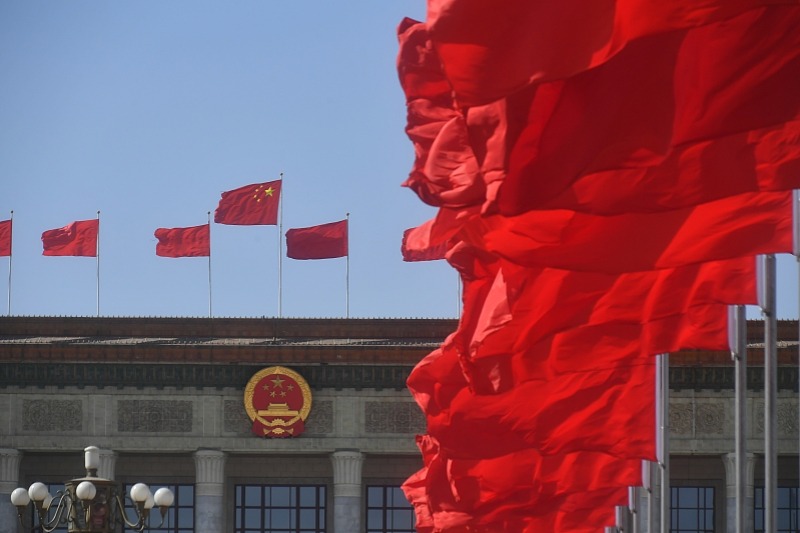Historic plenums path to modernization


Deng Xiaoping (1904-97) was born in Guang'an, Sichuan province, 120 years ago. By the age of 74, the man who had witnessed nearly the entire 20th century changed China's trajectory and indirectly shaped the world as we know it today.
In my quest to enrich my understanding of China, a significant encounter has been with Eugenio Bregolat, who served as Spain's ambassador to China three times — a rarity in diplomatic circles. Bregolat is also the author of a book, The Second Chinese Revolution (2014), which explores China's transformation following Deng Xiaoping's rise to power. This is a book with great analytical quality, offering insights from extensive experience in world affairs.
His choice of the book's title is revealing: The first Chinese revolution succeeded in 1949, leading to the establishment of the People's Republic of China under the leadership of Mao Zedong (1893-1976), and the second occurred in 1978.
'New Long March'to transform China
Indeed, the reforms initiated by the third plenary session of the 11th Central Committee of the Communist Party of China in 1978 were nothing short of revolutionary. The plenum described "socialist modernization" as a "profound and extensive revolution" and called for a "new Long March" to transform China into a modern, powerful socialist country. This pivotal moment ushered in the era of reform and opening-up.
We all know what happened next: by transforming itself, China transformed the world. By 2001, China had joined the World Trade Organization, and the country is today the world's second-largest economy. It has regained a central role in global affairs, yet history is ongoing, and China continues to evolve in a world shaped by new dynamics. Recently, a narrative of "peak China" has emerged, suggesting China has already reached its zenith and may now face stagnation. I disagree with this perspective.
The third plenary session of the 20th CPC Central Committee, held in July 2024, signifies a new momentum akin to the 1978 "new Long March". China is not static, as the "peak China" narrative falsely implies. Anyone directly connected with Chinese society would be aware that the country is very much on the move, driven by a collective ambition proportionate to the glories that have shaped its ancient civilization.
In the "Resolution of the Central Committee of the Communist Party of China on Further Deepening Reform Comprehensively to Advance Chinese Modernization" adopted by the third plenum of the 20th CPC Central Committee, a connection is explicitly made between the two political events separated by 46 years: "Reform and opening up have been crucial to the cause of the Party and the people, enabling us to catch up with the times in great strides. The third plenary session of the 11th CPC Central Committee was a landmark event that ushered in a new period: one of reform, opening up, and socialist modernization."
The core message of the third plenum of the 20th CPC Central Committee is that both reform and opening-up must be deepened. This indicates not contentment with the current status quo but a drive for further progress. China, while pursuing its own model of political modernity and aiming for high-quality development, remains committed to opening-up.
A reader might ask, "But announcements following a political meeting are not actions, and there is a significant gap between a plan and its realization." This is a legitimate question. However, the past four decades have demonstrated that China is highly capable of implementing its plans.
This capability is at the very heart of Chinese governance: strategic planning combined with effective implementation. The plan to develop a new city called Shenzhen? Accomplished. The plan to complement Puxi in Shanghai with Pudong? Accomplished. The plan to integrate 11 cities into the Greater Bay Area? Accomplished. The list could go on. Therefore, the likelihood is very high that China will successfully execute what its third plenum envisioned last month.
Transition from quantity to quality
The best way to understand China's current trajectory is as a transition from quantity to quality. This shift has several implications. First, China's ongoing "renaissance" will continue, enhancing its power and global influence.
Second, the world will need to adapt to highly competitive Chinese enterprises offering high-quality products and services. To use a managerial metaphor, Chinese enterprises will transition from a "red ocean strategy" to a "blue ocean strategy".
And third, China's evolving ecosystem will attract not only manufacturers but also innovators. Companies that choose to distance themselves from China risk missing out on a vast market and a large middle-income group, as well as potentially overlooking groundbreaking ideas and processes that could impact the global market.
The communique and resolution of the third plenum suggest that conditions are ripe for China and the world to co-create value and design a global governance structure that reflects the shifting balance of power. Ignoring these new dynamics in Chinese society would mean overlooking their inevitable impact on the global stage.
The resolution, previously quoted, states: "We will stay committed to the common values of all humanity, pursue the Global Development Initiative, the Global Security Initiative, and the Global Civilization Initiative, and call for an equal and orderly multipolar world and universally beneficial and inclusive economic globalization. We will deepen institutional reforms related to the work of foreign affairs and get involved in leading the reform and development of the global governance system." In the Resolution, the China watcher perceives clarity, consistency, and predictability — qualities that are desperately needed in a world fraught with various forms of disorder.
Let us step back and adopt a long-term perspective. The Industrial Revolution that emerged in Europe created a new world. At the end of the 18th century, China was unable to engage with this new world. The Middle Kingdom lost its centrality and was marginalized for 150 years. Today, China is accelerating its modernization in a revolutionary manner. It possesses all the resources, particularly human talent, to offer new solutions to global problems. It would be a strategic blunder of immense proportions for the West to disconnect from such an ambition, which has a potential epoch-making impact.
The author, a Sinologist, is the founder of the China-Europe-America Global Initiative, editor of China and the World in three volumes, and the creator of the Inspiring Series, a collection of books that aims to introduce China to the world. The views don't necessarily reflect those of China Daily.
If you have a specific expertise, or would like to share your thought about our stories, then send us your writings at opinion@chinadaily.com.cn, and comment@chinadaily.com.cn.

































